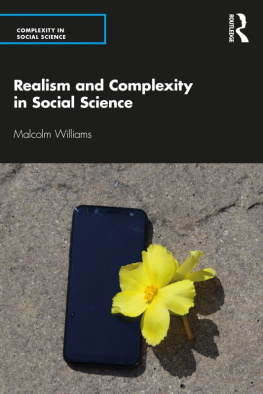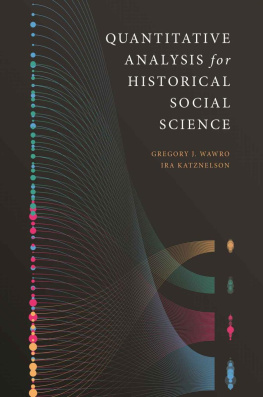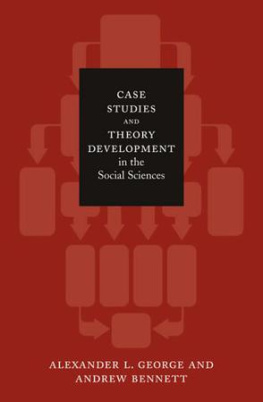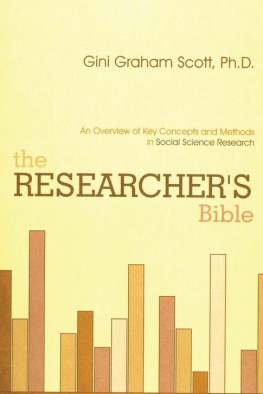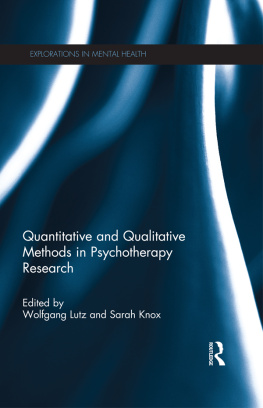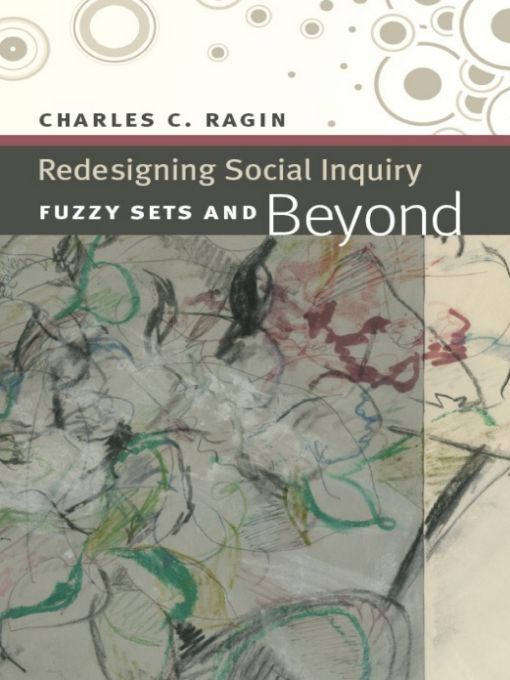
Table of Contents
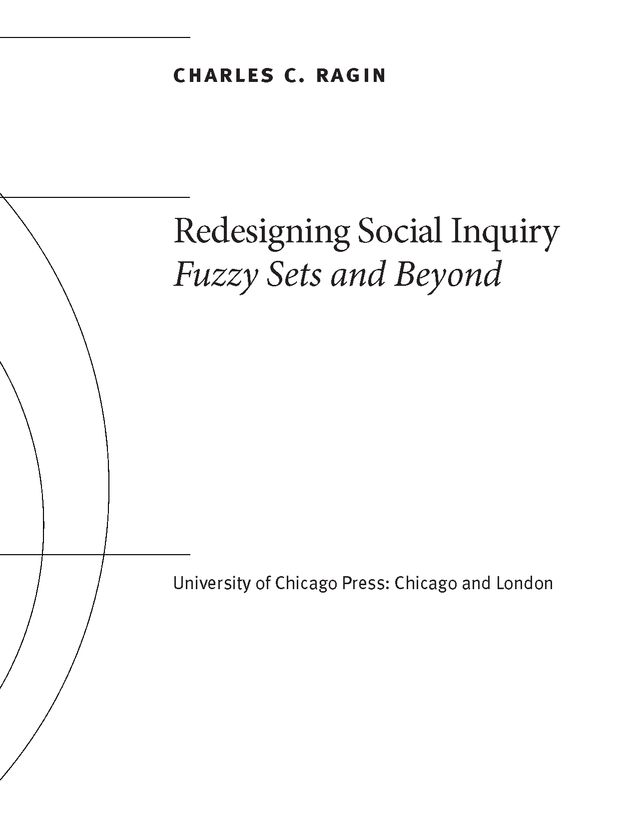
ACKNOWLEDGMENTS
It is impossible to list all the people who have contributed over the past several years to the ideas that I present in this book. I am sure I will miss many, including some who have been very influential. Perhaps my greatest debt is to unidentified questioners at talks and work-shops where I have presented this material. I hope that my response, presented in the pages that follow, is finally adequate.
I owe a deep debt to my colleagues, local and long distance, who have commented on various versions of the ideas presented in this book. I thank Edwin Amenta, Howard Becker, Henry Brady, Ron Breiger, David Byrne, David Collier, Barry Cooper, Gary Goertz, Lane Ken-worthy, Bruce Kogut, Jim Mahoney, Michael Minkenberg, Lars Mjoset, Benoit Rihoux, Carsten Schneider, Svend-Erik Skaaning, Steve Vaisey, Claudius Wagemann, and the readers for the University of Chicago Press. Special thanks also go to Sean Davey, who implemented my ideas in easy-to-use software and swatted logic bugs that almost got away, and to Sarah Strand, who helped with the bibliography and the index. I also thank Doug Mitchell and his colleagues at the University of Chicago Press for their steadfast support and encouragement.
A variety of institutions and organizations also have supported this work. Direct and indirect support came from the National Science Foundation, the University of Oslo, and various units of the University of Arizona, including the Udall Center for Studies in Public Policy, the Social and Behavioral Sciences Research Institute, and the departments of Sociology and Political Science. This project was initiated while I was a fellow at the Center for Advanced Study in the Behavioral Sciences in Stanford, California.
I also thank my wife, Mary Driscoll, and dedicate this book to her. Not only did she make room for this book in our life together but she also helped me struggle with the ideas, from the day it was launched to the day it was complete.
INTRODUCTION
First, a word about this books title, Redesigning Social Inquiry: while I sometimes have ambitions of truly redesigning social inquiry, it is a huge task that will require the work of many thoughtful scholars over several decades. In this book, my goal is to provide some possible leads for this important undertaking. Of course, there are those who would say that social inquiry does not need to be redesigned; it simply needs to be properly executed. The usual argument is that there is a well-developed and well-known template for conducting social research and that the problem is that too few researchers adhere to it. According to this view, the proper template is provided by large-N quantitative research, with its well-defined and seemingly limitless populations and its focus on calculating the net effects of independent variables in properly specified linear models. It is this template for conducting research that is at issue in this book. But the problem is not that it is a bad template. It is a wonderful, well-articulated template. The problem is that it is too often promoted as the best template or even the only template (e.g., by King, Keohane, and Verba 1994), when in fact there are powerful and productive alternatives. This book promotes a new alternative, one based on the analysis of set relations.
While critical of the conventional quantitative template, Redesigning Social Inquiry is not a critique of Gary King, Robert Keohane, and Sidney Verbas Designing Social Inquiry (1994). Henry Brady and David Colliers Rethinking Social Inquiry (2004) offers a thorough analysis and critique, from the perspective of both statistical theory and qualitative research. Instead, my book charts a middle path between quantitative and qualitative social research. This middle path is not a compromise between qualitative and quantitative methods, nor is it an attempt to reshape one in the image of the other. Rather, my goal in this book is to advance an approach that transcends some of the limitations of conventional quantitative and qualitative research by extending and elaborating set-theoretic principles of social research (Ragin 1987, 2000).
The unifying theme of this book is that the analysis of set relations is critically important to social research. Even though qualitative researchers rarely speak in these terms, qualitative analysis is fundamentally about set relations. Consider this simple example: if all (or almost all) of the anorectic teenage girls I interview have highly critical mothers (that is, the anorectic girls constitute a consistent subset of the girls with highly critical mothers), then I will no doubt consider this connection when it comes to explaining the causes and contexts of anorexia. This attention to consistent connections (e.g., causally relevant commonalities that are more or less uniformly present in a given set of cases) is characteristic of qualitative inquiry. It is the cornerstone of the technique commonly known as analytic induction (Lindesmith 1947). However, its set-theoretic nature is not widely recognized, even though this aspect has far-reaching implications for any attempt to bridge qualitative and quantitative approaches. Compounding the problem of the unrecognized importance of the analysis of set relations is the simple fact that many social scientists do not see any difference between studying set relations and studying statistical associations. If they have given it any thought at all, they think of set relations as the cross-tabulation of nominal-scale variables and thus see the study of set relations as a rudimentary form of quantitative analysis. One aim of this book is to put to rest these and other fundamental misunderstandings about the use of sets in social research.
It is also important to recognize that because almost all social science theory is verbal in nature, it, too, is fundamentally about sets and set relations. If I assert that a close connection exists between democracy and development and that, consequently, the developed countries are all democracies, in essence I am arguing that the set of developed countries constitutes a subset of the set of democracies. The fact that there are less-developed countries that are also democracies (thus providing evidence that other paths can be taken to democracy) does not undermine this claim in any direct way. After all, the argument addresses the developed countries, asserting, in effect, that development is sufficient for democracy. The set-theoretic nature of almost all social science theory is not acknowledged by most social scientists today. They are locked into the notion that set-theoretic arguments must be reformulated as symmetric correlational arguments before they can be tested. In fact, empirical evidence can give strong support to a set-theoretic argument (e.g., showing that the developed countries are indeed almost uniformly democratic), despite a relatively modest correlation (e.g., attenuated by other paths to democracy present in the subset of less-developed countries). Should a weak or only modest correlation cast doubt on the set-theoretic claim? A central argument of this book is that set-theoretic argumentsthe bread and butter of social science theoryshould be evaluated on their own terms, that is, as (asymmetric) set relations and not as (symmetric) correlational arguments.
Next page

